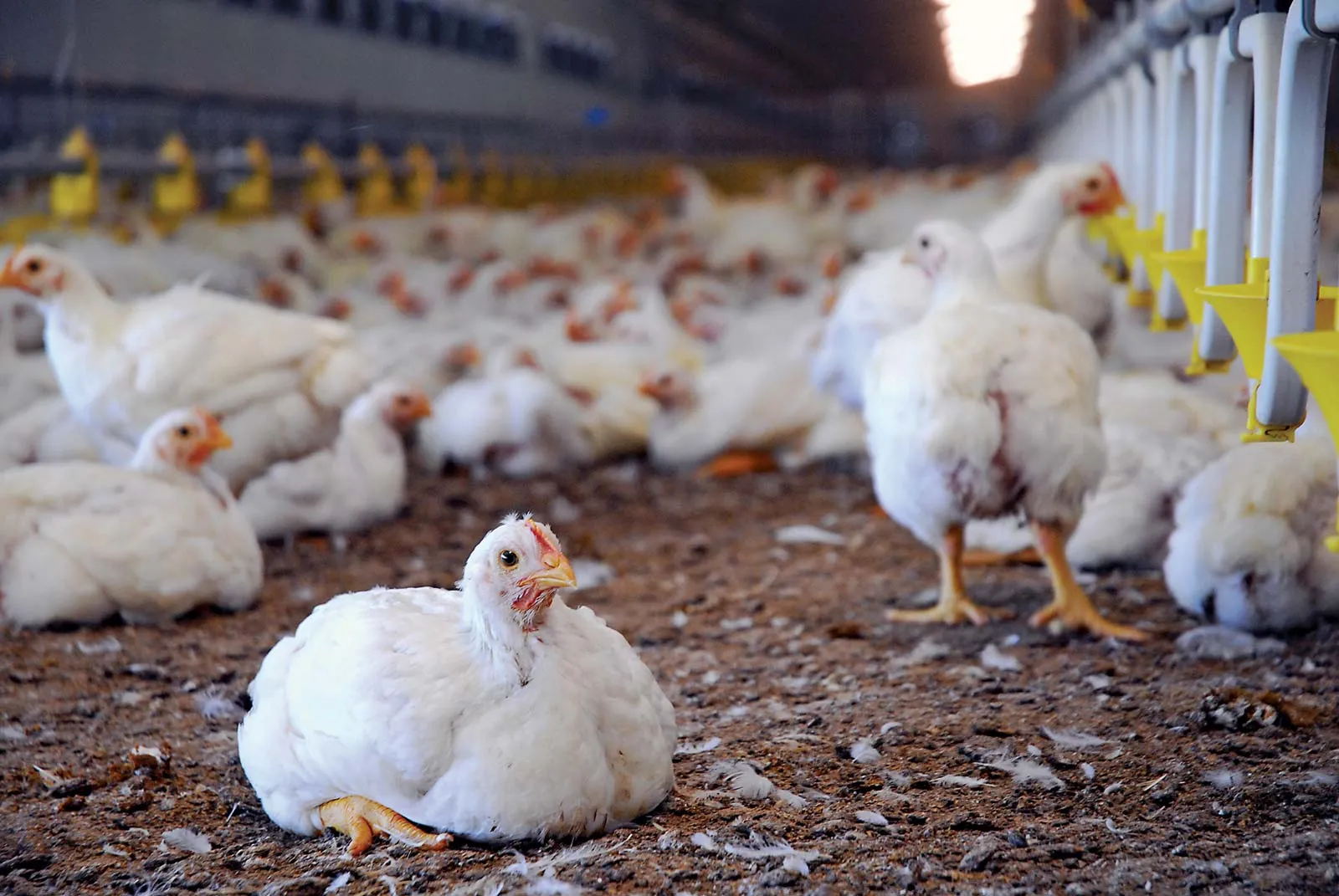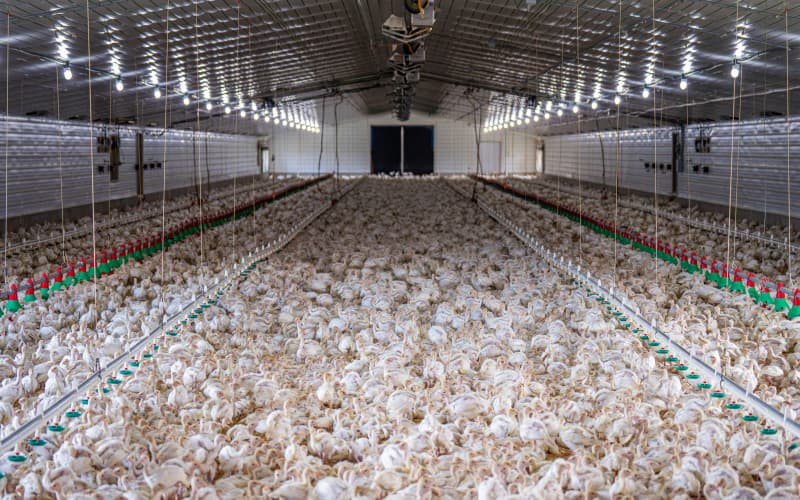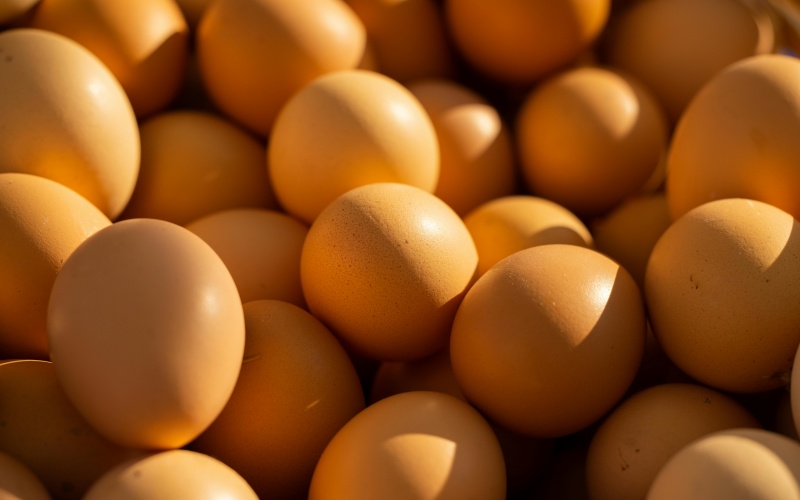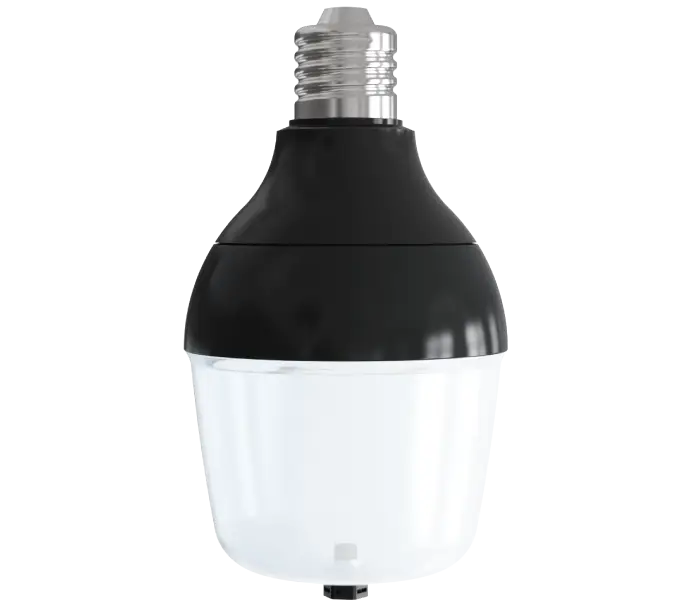¿Cómo afecta la iluminación a las aves de corral a la producción y el crecimiento?

Directorio:
1. ¿Por qué las luces para aves de corral son esenciales en las granjas modernas?
2. Explicación de los parámetros clave de la iluminación avícola
3. De las “lámparas tradicionales” a la “iluminación inteligente”
4. Planes de iluminación personalizados para diferentes tipos de aves de corral
5. Problemas comunes en la iluminación avícola y soluciones
6. El futuro inteligente y ecológico de la iluminación LED para la avicultura
7. Conclusión: La iluminación avícola como inversión de alta rentabilidad
1. ¿Por qué las luces para aves de corral son esenciales para las granjas modernas ?
Suele haber una idea errónea de que las luces instaladas en las granjas avícolas son solo para la comodidad del personal durante el trabajo. En realidad, la iluminación avícola afecta directamente a la biología de las aves .
Las gallinas y otras aves de corral perciben un espectro de luz más amplio que los humanos, incluyendo la luz ultravioleta, y su crecimiento y reproducción están estrechamente ligados a las señales lumínicas. La duración, la intensidad y el espectro de la luz influyen en la liberación de hormonas a través del eje hipotálamo-hipófisis-gónadas, que regula la producción de huevos, el crecimiento y la fertilidad.
En naves avícolas cerradas o de gran tamaño, la luz natural es irregular o inexistente. Sin una iluminación artificial adecuada, las gallinas ponedoras pueden presentar una menor tasa de puesta, los pollos de engorde pueden crecer de forma desigual y las reproductoras pueden sufrir baja fertilidad. Por lo tanto, una iluminación eficaz no es opcional, sino una herramienta de manejo fundamental que garantiza una mayor producción, un comportamiento estable del lote y una mejor eficiencia alimenticia.

2. Explicación de los parámetros clave de la iluminación avícola
La iluminación LED para un establo no se trata solo de encender y apagar las lámparas. Cuatro factores técnicos —fotoperiodo, intensidad, espectro y ritmo— trabajan en conjunto para influir en el crecimiento, el comportamiento y la productividad de las aves.
A continuación, las desglosamos en términos sencillos, destacando las diferentes necesidades de las gallinas ponedoras , los pollos de engorde y las reproductoras .
2.1 Fotoperiodo – “¿Cuánto tiempo deben permanecer encendidas las luces?”
La duración de la exposición diaria a la luz controla directamente el crecimiento y el ciclo reproductivo de las aves. Los granjeros deben adaptar los horarios a la especie y la etapa de crecimiento.
(1) Gallinas ponedoras:
Fase de puesta: Requieren de 14 a 16 horas de luz continua (por ejemplo, 16L:8O). Si la luz disminuye a menos de 12 horas (como en invierno), las gallinas reciben una señal para dejar de poner.
Cría de pollitos (0-6 semanas): La luz se reduce gradualmente de 24 horas a 8-10 horas. Esto evita que las gallinas maduren demasiado pronto.
(2) Pollos de engorde (pollos para carne):
Necesitamos entre 18 y 22 horas de luz a lo largo de nuestra vida. Los días largos prolongan el tiempo de alimentación, lo que favorece el aumento de peso. Sin embargo, al menos entre 2 y 4 horas de oscuridad son fundamentales para el descanso y la reducción del estrés.
(3) Criadores:
Light schedules should mimic natural seasonal changes. Gradually lengthening daylength improves fertility and egg set rates.
Common mistake: Assuming “longer is always better.” For example, giving 20+ hours of light to layers actually stresses hens, reduces fertility, and lowers egg production.
2.2 Light Intensity – “How bright should it be?”
Light intensity is measured in Lux (1 Lux ≈ brightness of an overcast indoor room). Different stages and poultry types demand different levels:
(1) Brooding (0–2 weeks): 20–30 Lux. Bright light helps chicks find feed and water quickly, lowering early mortality.
(2) Laying hens (production stage): 10–20 Lux. If too strong (>30 Lux), hens become restless and develop harmful behaviors like feather pecking. Too dim (<5 Lux) reduces feed intake and egg yield.
(3) Broilers (fattening phase): 5–10 Lux. Lower brightness keeps birds calmer, reduces energy waste on movement, and supports rapid weight gain.
Practical tip: Light must be evenly distributed across the house. Avoid dark corners (<3 Lux) or hot spots. Adjust hanging height (2–3 m above ground) and lamp spacing (every 2–3 m) for balance.
2.3 Spectral Content – “Which colors matter most?”
In recent years, poultry lighting research has focused on spectrum optimization, challenging the old belief that “any white light will do.”
Traditional incandescent lamps lean toward warm light (red-dominant), while fluorescent lamps lean toward cool light (blue-dominant). However, both have limited spectral ranges and cannot precisely meet poultry needs.
In contrast, LED spectra can be customized, with each wavelength playing a different role:
l red light (620–660 nm) promotes egg production in layers and accelerates weight gain in broilers;
l blue light (450–495 nm) suppresses broiler activity but may cause stress;
l green light (520–560 nm) can help increase egg weight;
l UV-A (320–400 nm) supports vitamin D3 synthesis but requires careful control.
In practice, mixed light dominated by red wavelengths is recommended for layer houses, while broiler houses should prioritize warm red light with reduced blue content.
2.4 Light Rhythm – “Continuous or intermittent?”
Lighting schedules can be continuous or broken into cycles:
(1) Continuous lighting:
Example:
16 hours straight. Simple, but high energy consumption and greater bird fatigue.
(2) Intermittent lighting:
Example:
Layers: 2 hours light / 2 hours dark (repeating).
Broilers: 1 hour light / 3 hours dark (repeating).
Benefits of intermittent rhythm:
Saves 30–50% energy.
Gives birds more rest, lowering stress and aggression.
Research shows laying rates can improve slightly compared with continuous light.
Important note: Rhythms must remain consistent. Frequent changes disrupt circadian rhythm, stressing the flock.
In short:
When applied correctly, these parameters transform lighting from a utility into a powerful tool for poultry performance.
3. From “Traditional Lamps” to “Smart Lighting”
Lighting technology in poultry farming has changed dramatically over the past few decades. Each stage brought progress, but also limitations that explain why farms are now moving toward LED and smart systems.
Incandescent lamps were once the standard. Their spectrum is close to natural sunlight and the upfront cost is low. However, they waste most energy as heat, last only about 1,000 hours, and are unsuitable for modern large-scale houses. They remain practical only for small backyard or temporary setups.
Fluorescent lamps reduced energy use compared to incandescent and provided stronger brightness. Yet, they rely on fixed spectral output, contain mercury, and typically last around 8,000 hours. Many mid-sized farms adopted them during the transition era, but environmental concerns and limited spectral control restrict their value today.
LED lights have become the mainstream choice. They cut energy consumption by up to 70%, operate over 50,000 hours, and allow tailored spectral design for broilers, layers, or breeders. They are also mercury-free and environmentally friendly. While the initial cost is higher, the long-term performance and efficiency make LEDs the most cost-effective option for intensive poultry houses.
The latest step is smart LED systems. Beyond efficiency, they enable remote control via apps or central management software, automatic scheduling of photoperiods, and integration with climate sensors for temperature and humidity. These systems adjust lighting programs dynamically, ensuring optimal growth and reproduction with minimal manual intervention. Their upfront cost and need for professional setup are higher, but for modern farms aiming at precision management, smart lighting delivers unmatched benefits.

4. Tailored Lighting Plans for Different Poultry Types
Lighting strategies should never be “one size fits all.” Different poultry categories respond uniquely to light, so farmers must adapt programs for layers, broilers, and breeders.

(1) Laying hens (layers)
Photoperiod: 16 hours of light during production (e.g., 5:00–21:00) and 8 hours in the resting phase.
Intensity: 15 Lux evenly across the house; avoid shadowed corners below 10 Lux.
Spectrum: Red-to-blue ratio of 3:1 (around 660 nm red + 450 nm blue), with limited UV-A exposure (1–2 hours daily) to improve calcium absorption and shell strength.
Rhythm: Intermittent cycles (2 h light + 2 h dark) help conserve energy while reducing stress behaviors.
Know more details about Chicken Coop Lighting for Egg Production.
(2) Broilers (meat birds)
Photoperiod: 24 h light in the brooding phase (0–2 weeks), then 20 h light + 4 h dark from week 3 onward (e.g., 6:00–2:00).
Intensity: 25 Lux during brooding to encourage feeding and drinking; reduce to 8 Lux in the grow-out phase to limit activity and improve feed conversion.
Spectrum: Dominantly red (≈70% at 660 nm) with minimal blue (<10%) to minimize stress.
Rhythm: Continuous light early, then switch to intermittent cycles (1 h light + 3 h dark) to balance growth and rest.
(3) Breeders
Photoperiod: Seasonal simulation—gradually extend daylight hours from 12 to 16 as in spring.
Intensity: 15–20 Lux, strong enough to support activity but not excessive, which could disrupt mating.
Spectrum: Broad-spectrum lighting (red, green, blue) to mimic natural daylight and stimulate breeding behaviors.
Rhythm: Continuous light during the active phase to maintain consistent mating patterns.
When applied correctly, these tailored lighting programs improve performance, welfare, and efficiency across all poultry houses.
5. Common Problems in Poultry Lights and Solutions
Even with well-planned programs, lighting issues often appear in daily farm management. Below are the most frequent problems and actionable poultry lighting solutions.
Problem 1: Uneven light distribution
Cause: Lamps hung too high, wide spacing between fixtures, or insufficient lamp power.
Solution: Use a staggered hanging pattern instead of straight lines. Choose wide-angle LED lamps (≥120° beam angle). Add supplemental lights in corners to eliminate dark spots.
Problem 2: Sudden drop in egg production (excluding disease)
Possible causes: Shortened photoperiod due to timer failure, reduced light intensity from faulty lamps, or abrupt spectral changes after replacing bulbs.
Solution: Check timers and fixtures weekly. When replacing lights, phase in the new lamps over 1 week before a full switch. Keep photoperiod, intensity, and spectrum stable unless deliberately adjusted for growth stage.

Problem 3: Feather pecking or cannibalism in broilers
Causes: Excessive brightness (>10 Lux), too much blue light, or insufficient dark periods.
Solution: Reduce light intensity to 5–8 Lux. Shift spectrum toward red while reducing blue. Guarantee at least 4 continuous dark hours daily for rest.
Problem 4: High lighting costs
Solution: Upgrade to LED lamps to save up to 70% energy. Apply intermittent lighting cycles to reduce operating hours. Install smart controllers that adjust brightness automatically with daylight, lowering artificial light use during sunny hours.
6. Smart & Green Future of Poultry LED Lighting
The future of poultry lighting is moving beyond simple illumination. For large-scale farms, the next decade will be defined by smart integration and sustainable design.
6.1 Smart upgrades
Light–climate–feed integration: Smart systems will connect lighting with temperature, humidity, and feed intake data. For example, during heat stress, the system can automatically dim lights to reduce metabolic load.
Targeted lighting: With cameras and sensors, farms may provide individualized light programs. Weak or sick birds could receive longer photoperiods to encourage feeding, while the rest of the flock follows standard cycles.
Data-driven management: Systems will log photoperiods, intensity, and production metrics like egg count or weight gain. AI analysis will then suggest or automatically apply optimized lighting schedules tailored to each flock’s performance.
6.2 Green development
Energy efficiency: Research is pushing LED efficiency beyond 150 lumens per watt, cutting power costs further. Solar-assisted systems are likely to become viable for remote or off-grid farms.
Eco-friendly materials: Mercury-free, recyclable fixtures will become the industry standard, aligning with environmental regulations and farm sustainability goals.
Welfare-focused lighting: Welfare directives, especially in Europe, are driving adoption of sunrise–sunset simulation instead of abrupt on/off cycles. Such gradual transitions reduce stress and improve overall flock health.
As technology advances, poultry LED lighting will no longer be just about visibility—it will become a central tool for precision farming, sustainability, and animal welfare.
7. Conclusion: Poultry Lights as a High-Return Investment
For farmers, poultry lighting is not a background detail—it is a direct driver of production, welfare, and profitability. The right program can improve egg yield, shorten growth cycles, and reduce stress, while poor lighting undermines all of these.
Traditional lamps may seem affordable, but their high energy use, short lifespan, and limited control make them costly over time. By contrast, poultry LED lighting offers precise spectrum tuning, stable intensity, and smart automation that align with modern farm needs. It reduces electricity bills, lowers maintenance, and creates healthier conditions for layers, broilers, and breeders alike.
The path forward is clear: adopting poultry LED lighting is not just an upgrade—it is an investment in long-term performance, sustainability, and competitiveness. For farms aiming to maximize efficiency and prepare for future demands, switching to LED is the most practical and profitable decision today.
Related Product


8. FAQs
Q1: Which light is better for broilers?
R: La luz blanca (LED de espectro completo) es óptima para los pollos de engorde. Mejora el consumo de alimento, el crecimiento muscular y la ganancia de peso entre un 8 % y un 10 % en comparación con la luz roja. La luz blanca también favorece índices de conversión alimenticia constantes (ICA de 1,6 frente a 1,8 con luz roja).
P2: ¿Por qué la luz roja produce huevos más pequeños?
A: La luz roja puede desencadenar prematuramente la liberación de oxitocina, acortando el tiempo de formación de la yema. Esto reduce el peso del huevo después de 30 semanas. Para compensarlo, se recomienda añadir luz verde (5 lux) a las zonas de anidación para mejorar el metabolismo del calcio y la calidad de la cáscara.
P3: ¿Mejora la luz roja la producción de huevos en gallinas ponedoras?
Sí , la luz roja (660 nm) acelera la madurez sexual y aumenta la cantidad de óvulos con el uso prolongado (18-60 semanas) al estimular las hormonas reproductivas. Sin embargo, los óvulos expuestos a luz roja son sistemáticamente más pequeños que los expuestos a luz blanca o verde, especialmente después de las 30 semanas.
En cuanto a la calidad de los huevos, la luz verde supera a la luz roja, produciendo cáscaras más gruesas y resistentes.
P4: ¿Cómo afecta la luz roja al comportamiento de las gallinas?
A: La luz roja reduce el estrés debido a su mayor longitud de onda (660 nm), que altera mínimamente los ritmos circadianos. Promueve comportamientos pasivos (descanso, acicalamiento) y reduce la agresividad en las bandadas.
Por el contrario, la luz azul aumenta la ansiedad en las aves de corral (por ejemplo, jadeo, agrupamiento en los patos), mientras que la luz blanca mantiene la estabilidad conductual.
_thumb.jpg)
